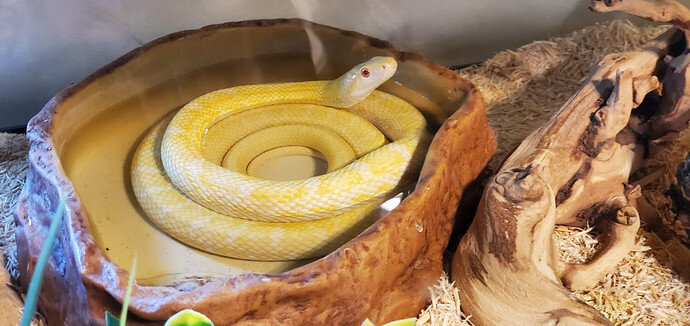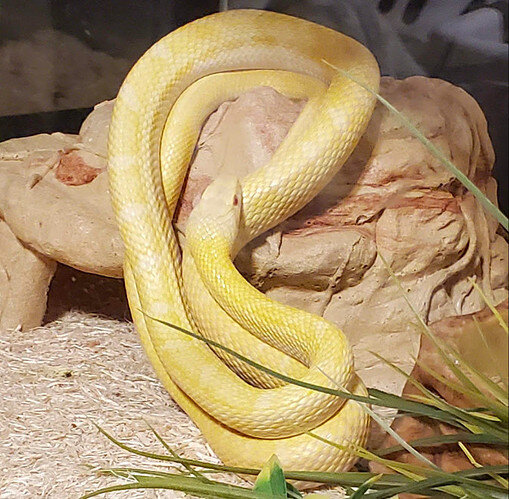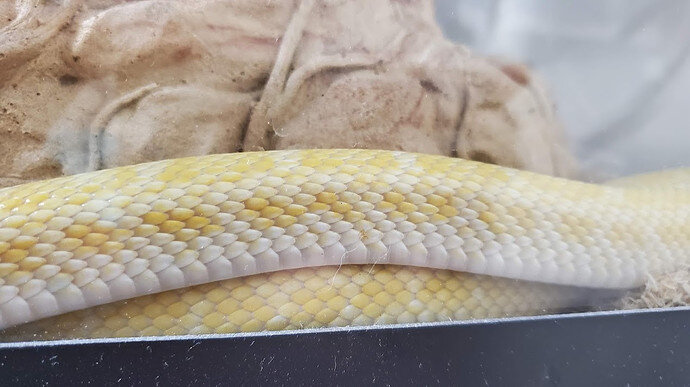I’m back again with another mystery snake needing ID. This long boy is Roo, I adopted him back in February. All I know about him is that he is an “albino rat snake” according to his previous owner, who also adopted him with very little info. He’s at least 5’ with what seems to me like an unusually long tail. He’s also not fond of a whole lot of heat and a rather picky eater. A few of these photos are also somewhat washed out, the darker yellow is more accurate.
He’s beautiful. I have a wild caught female black rat snake that also doesn’t like the heat and will only eat lizards. I have tried many times to get her to eat mice but she will only eat the brown anoles that are plentiful around our house. I plan to breed her with my albino corn snake when she is old enough just to see what i get from it. Hopefully i will get an albino like this from it.
You can’t get an Albino from a first generation pairing of an Albino and a normal, unless the normal is a het. It is extremely unlikely that a wild caught animal of a different species is het for a compatible form of albinism.
Although I didn’t get an answer here, I figured I’d update anyways, in case anyone wanted to know the outcome. After some serious investigation, turns out my mystery boy is an Albino E. climacophora. After ditching his heat lamp and rearranging the enclosure, he’s much happier. Currently in the process of finding him something larger with a bit more height/more climbing space.
I do want to say that the whiteness on his head does remind me of an albino Japanese rat snake. Also his head structure and scale structure give it away.
I didn’t see this post, but I could have told you it was a Japanese rat snake right away. Sorry I was late to seeing this. But yeah, they can be kept basically on room temps.
You shouldn’t breed a black rat snake to a corn snake unless you have experience with making hybrids. You also won’t get albinos, and selling the animals will be hard.
These were what I used to verify. I knew he was a species I hadn’t had contact with before. It’s been an awesome surprise, though, and I’m just glad it gives me the info I need to really make him happy and comfortable in his environment.
This has been one of the best revelations since pinning down what he is. I immediately removed his heat lamp, put him in an area that wasn’t near any of my other enclosures that use lamps, and added more climbing opportunities and he’s much more comfortable. Now I just have to pin down why he’s so finicky with food, but from what I’ve read, they do have a habit of refusing food in the fall. I’m not going to really worry unless he starts showing any other signs, right now he’s bright, alert, active, and a healthy weight.



